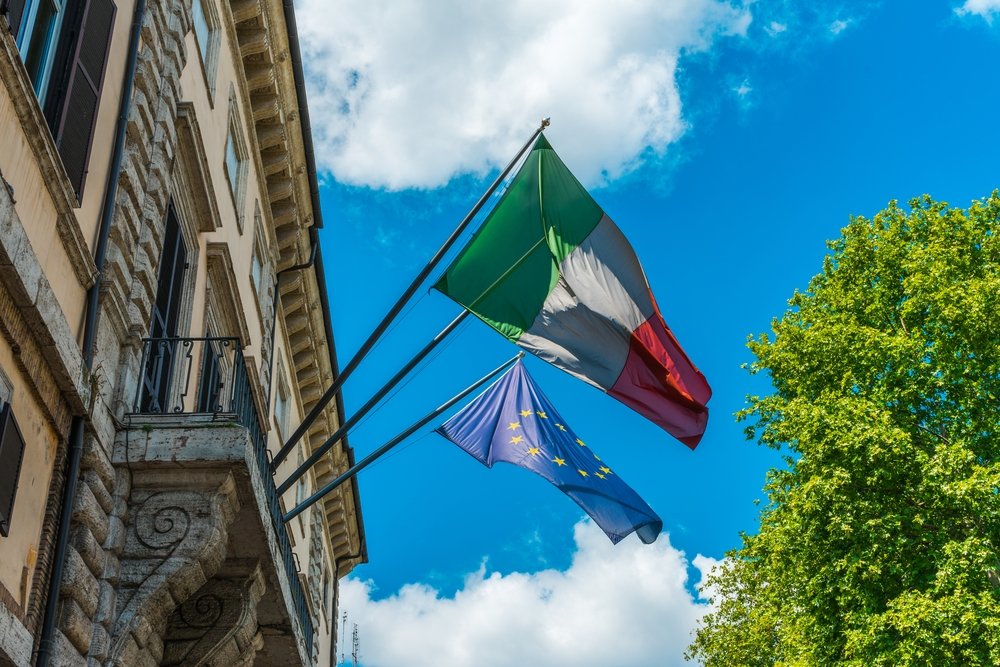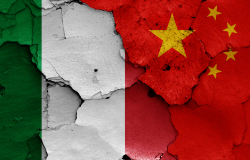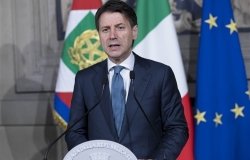Draghi’s technocratic government should seize opportunity to reform Italy

Shutterstock/Wondervisuals
On January 26, Italy’s Prime Minister Giuseppe Conte resigned, bringing an end to Italy’s 66th government in 76 years. While Italy’s government collapsing itself isn’t noteworthy as this happens about once every year and a half, it comes at a critical juncture as domestic pressure mounts to revitalize Italy’s faltering economy and provide stable leadership to navigate the global pandemic. In its time of crisis, Italy has turned to Mario Draghi, a stalwart figure in European politics and former European Central Bank president, to form a technocratic government. Italy has a history of resorting to technocratic governments composed of experts rather than politicians during times of crisis, offering a rare opportunity for Draghi’s government, which is finding unlikely support from across Italy’s political spectrum and with one of the largest pots of EU recovery funds at its disposal, to implement reforms needed to revitalize the economy and help the Italian people weather the pandemic.
What led to the Italian government’s collapse?
The political upheaval began after former Prime Minister Matteo Renzi pulled his centrist party, Italy Alive (Italia Viva), out of the governing coalition. Renzi had been critical of then-current Prime Minister Giuseppe Conte’s handling of the coronavirus crisis and his economic plan for allocating €209 billion (about $250 billion) in EU funds for recovery. He argued it didn’t go far enough to help Italian citizens. Faced with the prospect of ruling with a minority government, Prime Minister Conte resigned on January 26 after failing to gain enough supporters to strengthen his position within the government.
Currently, Italy is receiving the largest portion of the EU’s €750 billion fund in grants and loans. It will be up to Draghi to succeed where Conte could not and draw up a plan on how to utilize these funds to bolster the Italian economy. Italy’s economy never truly recovered from the 2008 financial crisis, with its growth lagging behind its peers and a severe depression worsened by the coronavirus. Italy is reeling from a second wave of coronavirus outbreaks and is now the EU country with the highest death toll with over 92,000 dead, the sixth highest country in deaths worldwide. With one of the largest economies in Europe, the stakes for Italy to implement reform have implications that would resonate across the continent should it fail.
Will ‘Super Mario’ save Italy?
Mario Draghi, referred to affectionately as ‘Super Mario’, is a titan in EU circles best known for his effective handling of the European debt crisis and for saving the euro itself. He’s been tasked with forming a technocratic government, or a government composed of experts instead of elected politicians.
Draghi’s technocratic government is attracting many comparisons to the technocratic government of another Mario, Mario Monti in 2011. Faced with the fallout of the 2008 financial crisis and European sovereign debt crisis, Monti exercised budget discipline that made him an unpopular, but necessary, leader. Monti’s detractors saw his reduction in spending as too extreme and many Italians still remember the painful fiscal tightening, but his supporters viewed these difficult reforms as a necessary evil to prevent Italy from financial ruin. Unlike Monti, Draghi will not have to fend off the creditors (the troika) supporting Italy during the sovereign debt crisis, potentially offering more flexibility in the scope and timeline of reform. Instead, the unpopular reforms Draghi will need to implement come from a desire to ameliorate the situation of the Italian people, the economy, and the wider eurozone. Amidst the worst global health crisis in a century, Italy needs a stable government capable of putting the needs of its people ahead of individual politicians, but in order to make these changes, Draghi will need buy-in from the leading political factions in Italy.
Pro-EU Draghi the unlikely ally of Euroskeptic Italian Parties
Draghi, an avowed pro-Europeanist, has found unlikely support from the numerous anti-EU, anti-euro political parties currently dominating the Italian political scene. The government that recently collapsed was led by a coalition of the anti-establishment Five Star Movement (Movimento 5 Stelle), the center-left Democratic Party (Partito Democratico) and its offshoot Italy Alive (Italia Viva), forming the yellow-red government in honor of the party’s colors. When the last government was formed in September 2019, the far-right Northern League (Lega Nord) was the most popular party according to polls, but despite its size and leader’s rhetoric, it was excluded from the governing coalition.
Now, a year and a half later, the political landscape looks different, with the Northern League still the most popular party according to recent polls but with less of a commanding lead. The Brothers of Italy (Fratelli d’Italia) has surged in popularity in recent years, with its socially conservative, ethno-nationalist views resonating during times of economic hardship. Of the four largest political parties in Italy, the League and the Brothers of Italy are openly anti-EU and anti-euro, setting up for a fundamental clash with Draghi. Incredibly, both the League and Five Star Movement have signaled they would support Draghi, despite both parties originally being opposed to the euro and skeptical of the European Union. In this rare display of unity in Italian politics, Draghi has the potential to form a government with a large enough majority to make the difficult reforms Italy needs.
Mario Draghi was famously able to save the euro from Europe’s debt crisis, but will his technocratic government be able to save the Italian people from the coronavirus, political infighting, and bolster a stagnant economy? The economic planning and implementation Draghi’s government oversees in the next few months will determine the future of the Italian economy, the Eurozone, and have a last impact on future generations of Italians.
About the Author


Global Europe Program
The Global Europe Program is focused on Europe’s capabilities, and how it engages on critical global issues. We investigate European approaches to critical global issues. We examine Europe’s relations with Russia and Eurasia, China and the Indo-Pacific, the Middle East and Africa. Our initiatives include “Ukraine in Europe” – an examination of what it will take to make Ukraine’s European future a reality. But we also examine the role of NATO, the European Union and the OSCE, Europe’s energy security, transatlantic trade disputes, and challenges to democracy. The Global Europe Program’s staff, scholars-in-residence, and Global Fellows participate in seminars, policy study groups, and international conferences to provide analytical recommendations to policy makers and the media. Read more









